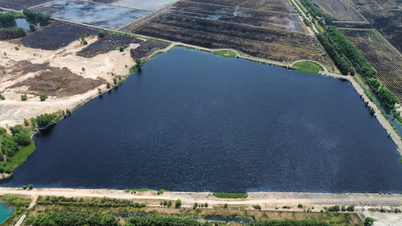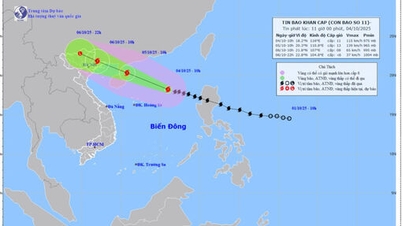At that crossroads, choose to sit still and let the waves carry you away, or proactively take the wheel and find a new way to set sail?
Data journalism is the new “compass”. No longer a supporting skill, data has become a survival tool for modern journalism: Turning meaningless numbers into compelling, transparent stories, restoring trust in readers, and above all, opening up new, more diverse business models than ever before. Choosing data is choosing the future. And this story begins with today’s decisions by leaders of editorial offices, reporters, and press management agencies in Vietnam.

Data journalism and the digital journalism boom
If the vast sea of digital information is a murky sea, then data journalism is the beacon that helps society avoid drowning in fake news and rumors. More than just reporting news, data journalism is the art of turning seemingly dry, massive sets of data into moving and persuasive stories.
From the days of investigative journalism with spreadsheets and simple statistics, technology has opened up new horizons: Big data, interactive visualization, artificial intelligence, all have become "tools" for modern journalists. It is the pressure from the crisis of trust, fake news, and competition from social networks that has forced journalism to transform, taking transparency, verification and in-depth analysis as the foundation.
Data journalism therefore not only increases the value of content, but also becomes a “diamond”, an exclusive asset that helps newsrooms build trust, retain readers and is the foundation for new business models of digital journalism.
Main monetization models from data journalism
Looking around the world , pioneering newsrooms like ProPublica, The Texas Tribune or New York Times all show one thing in common: Data is an asset, but it must be "manufactured" to become gold. It is possible to sell processed data sets directly like ProPublica Data Store, which earned tens of thousands of dollars in just the first few months, although the main source of revenue is still community funding. Or like Bloomberg, New York Times, they develop in-depth paid newsletters based on exclusive data, creating a different value that is difficult to copy...
Notably, data journalism also opens up new avenues, creating indirect revenue streams such as organizing events, seminars, training, or licensing analytical and visualization tools to turn the newsroom brand into an innovation center. Finally, data helps increase the value of subscription packages, retaining loyal readers as NYT, Guardian, UDN have proven. It all starts with investing in the team and technology, so that each data story is not only good, but also "makes money" for the digital newsroom.
International lessons and translation into Vietnamese practice
Looking at the world, the success of newspapers like The Texas Tribune, ProPublica, or New York Times comes not only from technology, but from turning data into a “strategic asset” - where all products and services are based on data. Diversifying revenue sources, constantly innovating models, and constantly investing in human capacity are common points that are easy to see. However, the most important thing is the mindset that “data is not just a storytelling tool, but a real business value”.
In Vietnam, despite positive developments, most newsrooms are still “on the cusp” of data journalism. Multidisciplinary teams are lacking, investment in technology and data analysis is limited, the open data ecosystem is not yet well developed, while the fear of change is still heavy. But opportunities are right in front of us: Readers are increasingly demanding, the business market needs data to serve decision-making, and the “playground” of newsletters, consulting, and data training is still very new. Those who boldly take the lead will have a sustainable competitive advantage - otherwise, this “golden wave” will quickly drift into the hands of international players or emerging technology startups.
Recommended actions for Vietnamese press
Real innovation only begins when individuals and organizations proactively step out of their “comfort zones”. For newsroom leaders, data is not just a technology project, but must become a core strategy that lasts for many years. Investing in technology is important, but investing in people is even more important: Building a multidisciplinary team, promoting a culture of learning, creativity, and daring to try and fail.
Young reporters, in the data era, need not only to know how to write well, but also to be proficient in searching, processing, and visualizing data. Be proactive in learning new skills, collaborating with analysts and programmers so that each story is in-depth, transparent, and engaging.
Managers, look beyond the short-term numbers: Data journalism is a real “gold mine” for the nascent Vietnamese market. The opportunities for products, services, newsletters, data reports, training... are endless.
Journalism schools and training institutes also need to expand data journalism programs and connect more strongly with businesses to create high-quality human resources.
Data, in itself, is not pure gold, but only when it is “crafted” by human hands and minds, will it become a lasting value. In the turmoil of digital journalism, those who know how to turn data into a compass, into a sail will lead the boat through big waves. Data journalism requires a pioneering will, daring to accept challenges, daring to fail to learn, to go further.
Opportunities have never been so wide open. But anyone can miss out if they don't start today...
Source: https://hanoimoi.vn/la-ban-trong-cuoc-choi-kiem-tien-thoi-so-hoa-706182.html



![[Photo] Bustling Mid-Autumn Festival at the Museum of Ethnology](https://vphoto.vietnam.vn/thumb/1200x675/vietnam/resource/IMAGE/2025/10/4/da8d5927734d4ca58e3eced14bc435a3)
![[Photo] Solemn opening of the 8th Congress of the Central Public Security Party Committee, term 2025-2030](https://vphoto.vietnam.vn/thumb/1200x675/vietnam/resource/IMAGE/2025/10/4/f3b00fb779f44979809441a4dac5c7df)
![[Photo] General Secretary To Lam attends the 8th Congress of the Central Public Security Party Committee](https://vphoto.vietnam.vn/thumb/1200x675/vietnam/resource/IMAGE/2025/10/4/79fadf490f674dc483794f2d955f6045)






























![[Infographic] Notable numbers after 3 months of "reorganizing the country"](https://vphoto.vietnam.vn/thumb/1200x675/vietnam/resource/IMAGE/2025/10/4/ce8bb72c722348e09e942d04f0dd9729)




























![[VIDEO] GENERAL SECRETARY TO LAM AWARDS PETROVIETNAM 8 GOLDEN WORDS: "PIONEER - EXCELLENT - SUSTAINABLE - GLOBAL"](https://vphoto.vietnam.vn/thumb/402x226/vietnam/resource/IMAGE/2025/7/23/c2fdb48863e846cfa9fb8e6ea9cf44e7)


































Comment (0)